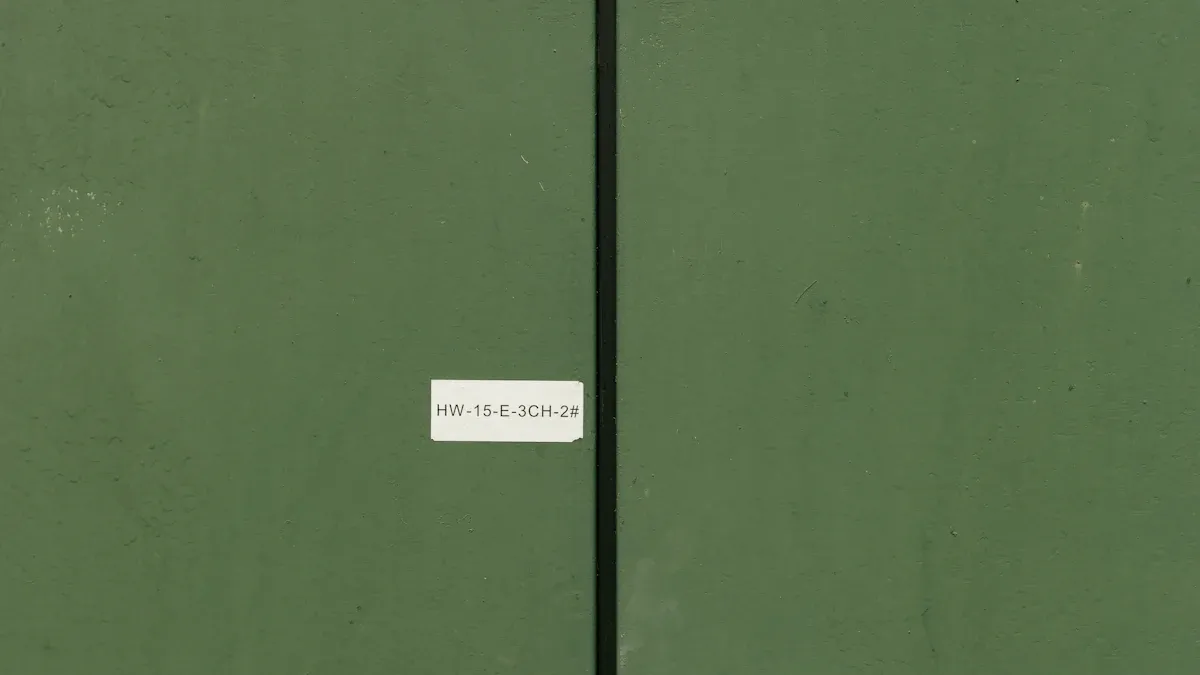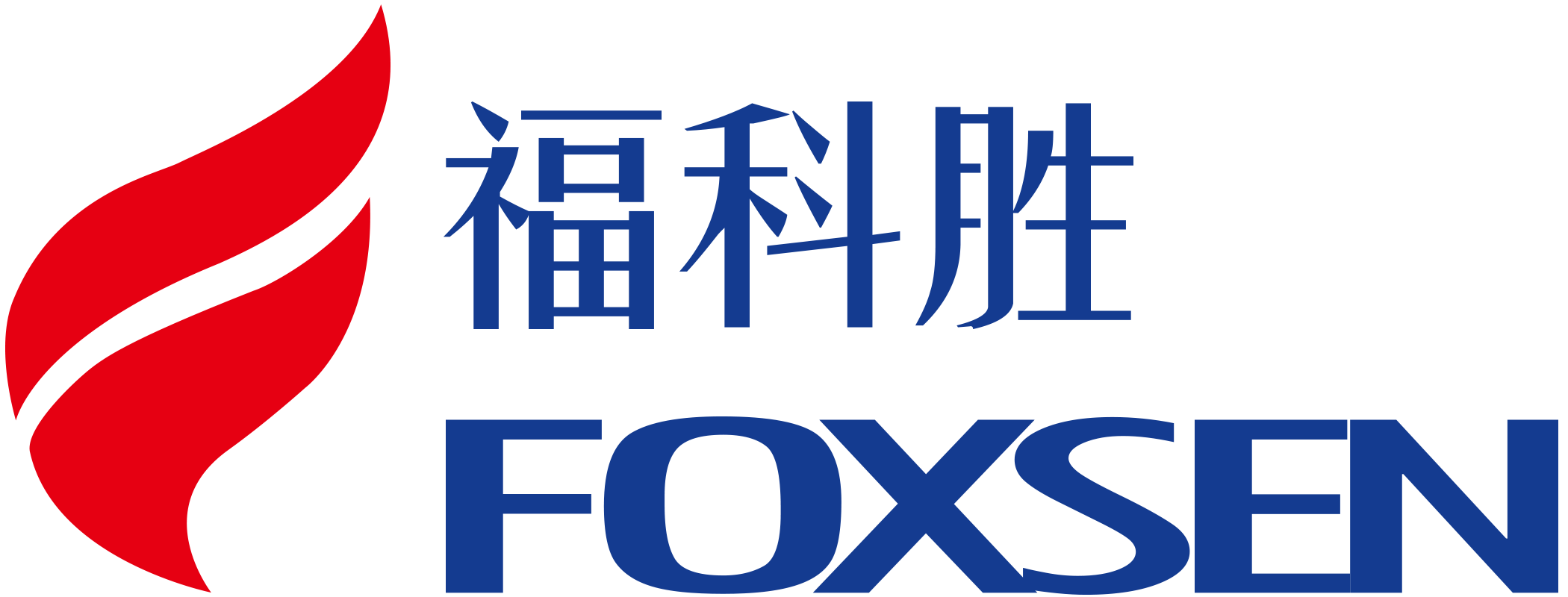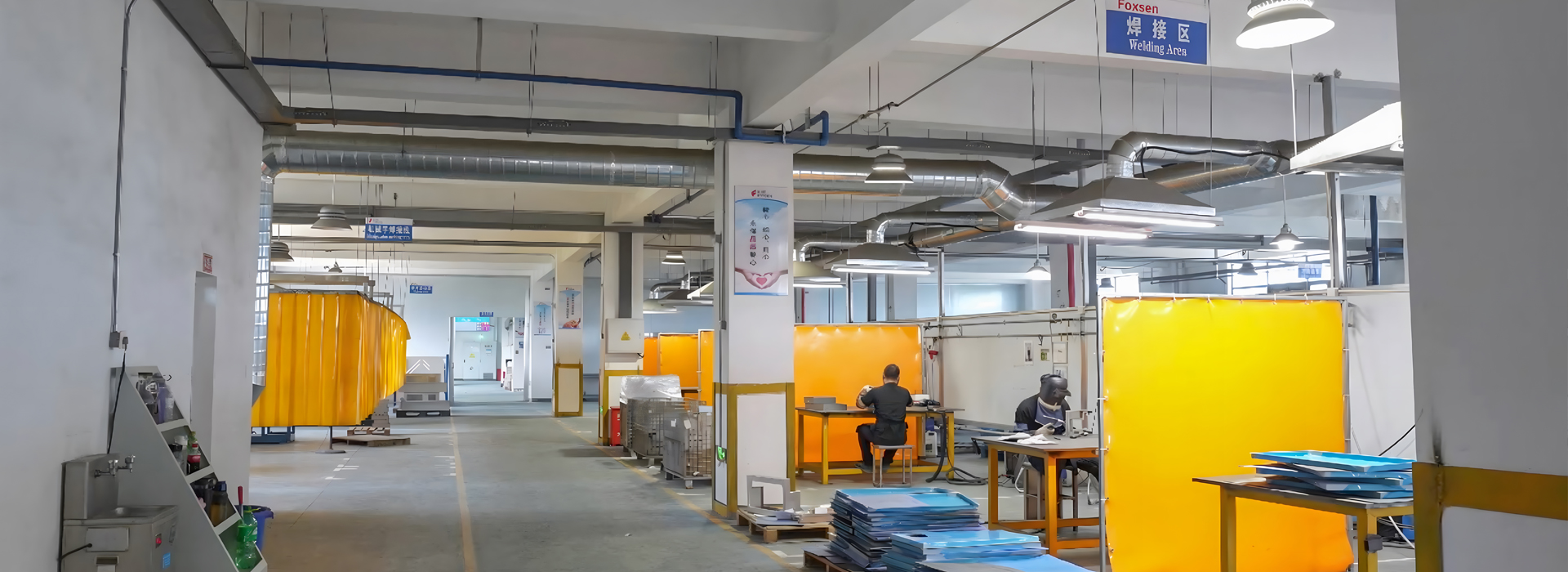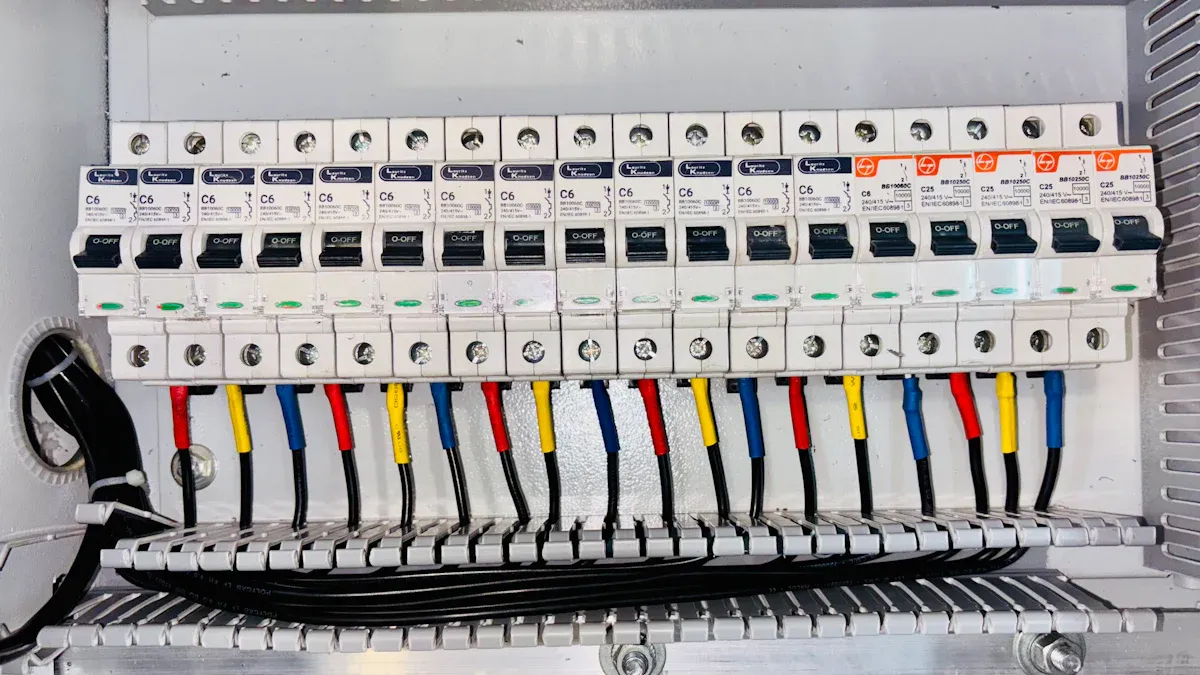Choosing the correct sheet metal switchgear enclosure is very important. It helps keep industrial spaces safe and efficient. Think about factors such as strength, material type, and weather resistance. Different jobs require enclosures that can withstand challenges like water or heat. Selecting the right one ensures your tools are protected and minimises repairs and delays. Sheet metal enclosures are robust and versatile, catering to various work needs across different industries.
Key Takeaways
Picking the right metal enclosure keeps workplaces safe and efficient.
Think about the environment and materials to ensure it lasts long.
Checking and cleaning regularly helps the enclosure last longer.
Custom designs can work better and meet special needs easily.
Knowing NEMA and IP ratings helps choose safe, suitable enclosures.
Understanding Switchgear Enclosures in Industrial Applications

Purpose of a sheet metal switchgear enclosure
A sheet metal switchgear enclosure protects electrical parts from harm. It keeps equipment safe from dust, water, and hot or cold weather. These enclosures stop unauthorised access and lower the chance of electrical accidents. They also help organise tools, saving space in busy workplaces. For instance, disconnect enclosures let workers cut power quickly. This reduces delays during repairs and boosts safety. These features make them essential in fast-moving industries.
Common industrial uses for sheet metal enclosures
Sheet metal enclosures are useful in many industries. They are often used for:
Industrial automation: Holding PLCs, motor starters, and relay panels in factories.
Telecommunications: Protecting switches, routers, and cables indoors and outdoors.
Utilities and power generation: Keeping control gear, meters, and transformers safe from weather.
Transportation: Housing controllers for traffic lights, rail crossings, and toll booths.
Healthcare: Guarding backup power, life-safety systems, and medical tools from dirt.
Commercial buildings: Organising wires, fire alarms, and security systems.
These examples show how sheet metal enclosures work well in different industries. They keep equipment safe and working properly.
Importance of proper enclosure selection for safety and efficiency
Picking the right enclosure improves safety and work efficiency. Metal enclosures are strong and handle heat well, making them good for tough jobs. But they need grounding to stay safe. Non-metal ones are lighter and easier to change, and they block electricity naturally. Choosing wisely cuts repair costs and makes systems last longer. For example, smelters save money and use less space with modern enclosures. Data centres gain automatic power fixes and lower system costs. These benefits prove that smart choices improve safety and save money.
Enclosure Materials and Their Suitability
Overview of common enclosure materials
When picking materials for sheet metal enclosures, think about their features. Match these features to your work needs. Materials are either metallic or non-metallic. Metallic ones include aluminium, mild steel, and stainless steel. Non-metallic ones include fibreglass, polycarbonate, polyester, and ABS.
Each material has its own strengths. Aluminium is light and doesn’t rust, so it’s great outdoors. Stainless steel, especially 316 type, is tough and resists chemicals. Non-metallic materials like polycarbonate stop electricity and can be shaped for special uses.
Choose the material based on your work area and needs.
Benefits of stainless steel, galvanised steel, and aluminium
Stainless steel, galvanised steel, and aluminium are top choices for enclosures. Each works well for different jobs:
Stainless Steel: Strong and long-lasting, it resists rust and stress. It’s perfect for wet or chemical-heavy places. Extra coatings may be needed in very harsh spots.
Galvanised Steel: Covered with zinc, it fights rust. It’s less strong than stainless steel but costs less. It’s good for easier jobs.
Aluminium: Light and naturally rust-free, it’s great for humid or outdoor areas. It also spreads heat well, making it useful for hot equipment.
Costs vary too. Aluminium is cheaper to make and move, while stainless steel costs more but lasts longer.
Choosing materials based on environmental conditions
The environment matters when picking materials. Corrosive places need 316 stainless steel or fibreglass to resist rust and chemicals. Outdoor areas need UV-safe materials like polycarbonate or stainless steel to avoid sun damage.
Dusty or wet places need enclosures with tight seals and rust-proof materials. For example, IP67-rated enclosures block all dust and handle short water dips. NEMA 4X enclosures resist dust, water, and rust, making them great for tough jobs.
Pick materials that match the environment to boost safety and make equipment last longer.
Key Design Considerations for Industrial Enclosures
Durability and strength requirements
When picking a sheet metal enclosure, strength is very important. The material must handle tough industrial conditions. Aluminium is light and resists rust, making it useful for many jobs. Steel is very strong and good for heavy work but needs coatings to stop rust. Stainless steel, especially 316 type, is strong and resists rust, making it great for wet or chemical-heavy places.
You should also check if the enclosure can handle hits and shakes. Impact tests check if it protects parts when dropped or hit. Vibration tests see if it works well with constant movement. These tests make sure the enclosure is tough enough for your needs.
Size and capacity for equipment housing
The right size is key for holding equipment properly. Check how much space, power, and cooling your tools need. For example, rack-level planning ensures racks hold equipment safely. Row-level planning checks each row’s needs to save resources. Room-level planning ensures the whole area fits all equipment without overloading.
Think about future needs too. A small enclosure might not fit new tools later. A big one could waste space and money. Also, make sure it cools well to stop overheating, which can harm parts.
Design considerations for accessibility and maintenance
Easy access is important for enclosure design. Look for features that make fixing and checking parts simple. Modular designs let you swap parts easily. Standard parts make repairs quicker. Safety features like locks and shields protect workers during repairs.
Important parts should be easy to reach without taking everything apart. Clear labels and good instructions help you find parts fast, saving time. Designs that work with common tools make fixing easier.
Sensors that check system health can warn you about problems early. This helps avoid sudden breakdowns and keeps equipment working longer. By focusing on easy access and upkeep, your enclosures will stay reliable and useful for a long time.
Compliance Standards for Sheet Metal Switchgear Enclosures
Understanding NEMA and IP ratings
When picking a sheet metal switchgear enclosure, knowing NEMA and IP ratings is key. These ratings show how well enclosures protect against environmental risks. The NEMA system is common in North America. It checks if enclosures resist dust, water, and rust. For example, NEMA 4X enclosures work well in tough industrial settings.
The IP rating system is used worldwide and follows IEC 60529 rules. It measures how enclosures block dust and liquids. For instance, an IP65-rated enclosure stops all dust and resists water sprays. The table below shows the main differences between these systems:
Both systems help you pick the right enclosure for safety and durability.
Selecting enclosures based on compliance requirements
Different industries need different enclosures. Think about what your job requires. For example, car factories use 316 stainless steel enclosures to stop rust and cut repair costs. Hospitals need germ-free enclosures that follow FDA rules to stay clean. Offshore oil rigs need explosion-proof enclosures to handle extreme conditions safely.
Key things to check include:
Ingress Protection (IP) Ratings: Important for dusty or wet places.
NEMA Ratings: Needed for outdoor or industrial jobs.
Choosing the right enclosure improves equipment performance and makes it last longer.
Ensuring adherence to local and international standards
Following standards ensures enclosures meet safety and quality rules. Local laws, like electrical codes, may have specific needs. International standards like ISO 9001 and ISO 14001 give extra guidance. These cover quality control and environmental care.
Meeting these standards boosts safety and efficiency. Experts can help you understand and follow these rules.
Customisation Options for Industrial Applications
Adjusted sizes and designs
Custom sizes and designs help enclosures fit specific needs. These changes improve use by matching wiring setups and systems. For example:
Special enclosures improve airflow, keeping equipment cool in tough places.
Smart tools like sensors can be added for remote control of devices.
Custom shapes make enclosures fit better, making installation easier.
These designs are flexible and work well for precise projects. Whether for small spaces or big jobs, customisation keeps equipment safe and working well.
Extra features like airflow and locks
Airflow and locks are key features for better enclosures. Good airflow stops overheating and keeps dust away, helping equipment last longer. The table below shows important airflow details:
Locks keep equipment safe from tampering or unauthorised access. They follow safety rules and protect sensitive tools. Using strong materials like 316 stainless steel makes enclosures tough and reliable for industrial use.
Benefits of custom designs for better work
Custom designs bring many benefits for smoother work. Modular setups are easy to install and change when needed. These enclosures block dust, dirt, and noise, making workplaces safer. Advantages include:
Better workflows that reduce machine downtime.
Safe access that lowers the chance of worker injuries.
Designs that meet industry rules for safety and quality.
Custom enclosures improve productivity and keep equipment running well. Modular systems offer flexibility and long-term use, making them great for industrial tasks.
Practical Tips for Sourcing Sheet Metal Enclosures
Checking supplier reliability and skills
Finding a good supplier needs careful checking. Start by looking up suppliers and reading reviews. This shows their reputation and past work. Ask for quotes and samples to compare prices and quality. Share your design needs clearly to ensure they can deliver.
Focus on important factors when choosing suppliers. Check if their materials are strong and meet industry rules. Make sure they can handle big orders if needed. Suppliers with special skills in sheet metal work, like Foxsen, often provide better products. Their knowledge ensures enclosures are tough and fit industrial needs.
Questions to ask before choosing a supplier
Asking smart questions helps you pick the right supplier. Start by asking about their experience with sheet metal switchgear enclosures. Check if they offer custom sizes or features like airflow systems. Ask how long they take to make and deliver orders.
Confirm they follow standards like NEMA and IP ratings. Ask about their material choices, such as 316 stainless steel, for tough environments. Also, check their warranty and after-sales support. These show their focus on quality and customer care.
Why warranties and after-sales support matter
Warranties and support are very important when buying enclosures. A good warranty proves the product is reliable. It guarantees the enclosure will work as promised. After-sales help, like fixing problems or replacing parts, builds trust and keeps things running smoothly.
Studies show warranties affect buying decisions. For example, Foxsen’s strong warranty and helpful service make them a trusted supplier. Their support ensures your sheet metal enclosures stay strong and useful for a long time.
Tip: Pick suppliers with clear warranty terms and good after-sales help. This protects your money and keeps you happy with your purchase.
Maintenance and Care for Longevity
Routine inspection and cleaning practices
Taking care of enclosures helps them last longer. Make a plan for regular checks and cleaning. Look for damage like cracks or holes every month. Every three months, check if screws and parts are tight. In dirty areas, get a professional cleaning once a year to keep them working well.
Regular care keeps enclosures clean and safe. This lowers accidents and helps workers do their jobs better. It’s the best way to keep enclosures in good shape for a long time.
Preventing corrosion and environmental damage
Stopping rust is key to keeping enclosures strong. Keep the air dry by lowering humidity to 35-40%. Use special machines to control moisture in work areas.
Adding protective coatings also helps stop rust. In salty areas, test coatings to find the best one. Using materials like 316 stainless steel makes enclosures tougher and better for harsh places.
Indicators for replacement or upgrades
Knowing when to replace enclosures is important. Watch for rust, broken parts, or leaks. If it doesn’t meet safety rules or fit new tools, it’s time to upgrade.
New enclosures have better features like airflow and rust protection. Upgrading improves how well your equipment works. Regular checks help you decide when to replace or improve your enclosures.
Choosing the right sheet metal switchgear enclosure keeps workplaces safe. Think about material, size, rules, and upkeep when deciding. For tough areas, 316 stainless steel is very strong and reliable. Custom designs make enclosures work better and fit perfectly. Good enclosures protect tools and lower repair time. Talking to skilled suppliers helps you get what you need. This ensures your equipment works well for a long time.
FAQ
What material is best for outdoor switchgear enclosures?
316 stainless steel is great for outdoor use. It resists rust and tough weather. Aluminium is lightweight and doesn’t rust, making it another good option.
How can I pick the right size for my enclosure?
Measure your equipment and think about future needs. Leave space for airflow and easy maintenance. Too big wastes money, while too small risks overheating and damage.
Are custom enclosures a smart choice?
Custom enclosures match your needs perfectly. They improve airflow, safety, and access. These designs reduce downtime and boost equipment performance, making them worth the cost.
How often should I check my switchgear enclosure?
Check enclosures monthly for cracks, rust, or loose parts. Every three months, do a deeper inspection for strength. Once a year, hire experts to find hidden problems and keep it working well.
What do NEMA and IP ratings mean, and why are they useful?
NEMA and IP ratings show how enclosures block dust, water, and hazards. NEMA is used in North America, while IP is global. These ratings help you pick enclosures that fit your safety and environment needs.






